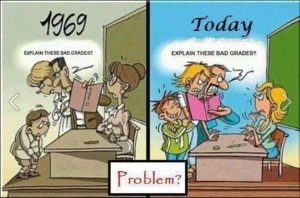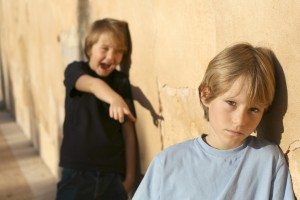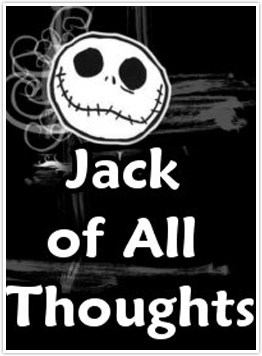There is a poignant remark in Peter Stearns’s book, ‘Anxious Parents,’ when he compares the parenting styles of the 19th-Century to the 20th-Century. Stearns highlighted how the 19th-Century approach to parenting viewed their children as, “Sturdy innocents who would grow up well unless corrupted by adult example and who were capable of considerable self-correction.” There is a striking contrast he made between that approach and the 20th-Century approach that viewed children as, “More vulnerable… Contemporary children were seen as more fragile, readily overburdened, requiring careful handling or even outright favoritism lest their shaky self-esteem be crushed.”
As parenting has evolved from the laissez-faire approach that aimed to allow children to learn by doing to its modern day form – filled with strategists who have established a 22 year plan for their child the moment they got the first ultrasound print – new fears emerge every so often that influences parents to turn an anecdotal circumstance into a nationwide epidemic.
This modern day approach to parenting has drawn considerable analysis all over the country. It inspired Hara Marano to write, ‘A Nation of Wimps’ for Psychology Today. In the article she details how sensitive parents are to their children’s self-esteem. The concern over their child’s self-esteem has caused many parents in America to go to extreme lengths to eliminate experiences of pain and failure as effectively as they can in their children’s life. Marano explains, “Although error and experimentation are true mothers of success, parents are taking pains to remove failure from the equation.”
Marano touched on a variety of topics from the extreme reluctance of parents to direct their kids towards a path of independence, and the desire to child-proof the playground by replacing concrete with a soft, cushy surface.
Since that article it seems that there is a new fear amongst today’s parents, bullying. Is bullying really a problem that it is perceived to be, or is this newly conceived ‘bullying epidemic’ endemic of this modern day, hands-on approach to parenting?
Over the course of the age where Stearns described how parents approached their children with ‘careful handling,’ fears about child safety have been intensely reactive to the media’s coverage and portrayal on matters pertaining to the issue. Take for instance the ‘Stranger Danger’ campaign that conditioned kids to be alarmed of almost any and every type of stranger. For parents it is alarming to see a story of a kidnapped child on the evening news. It evokes an emotion of mistrust parents have towards society after seeing such a horrific example of what could possibly go wrong in this world. The reality is though that for every 800,000 child abductions there are each year, only 115 of those are children being abducted by a stranger. It’s understandable that no parent wants to leave anything for chance, but what is the cost of this constant monitorization and inducement of fear in today’s kids?
It’s not just the parents that take measures motivated by hyper-reactivity. Schools all across the country are reacting to the sports-related injuries that children sustain by banning balls at recess because there are over 1 million visits to the emergency room each year. Traditionally parents and adults would use the line from Arnold Schwarzanegger’s Sci-Fi classic Terminator 2, ‘You’ll live’ when their kids ran over to them whaling over a booboo. Now overprotective parents and adults concerned over liability are using Arnold’s line from the Christmas classic Jingle All the Way, by saying ‘Aww… Poor ba-bee!’
I get it, everybody wants what is best for their kid. It’s probably the biggest emotional attachment an individual will have in their lifetime as it should be. But parents are molding their kids’ life around the absolute worst case scenario – A scenario similar to the odds of winning the PowerBall Jackpot. Instead of letting them go venture outdoors, go on adventures, and learn by doing, kids now are being babysat by the Ipad while in the living room because their parents don’t want them to leave their side. Instead of moms yelling to their kid that dinner is ready from the front lawn to the end of the street, kids now know that dinner is ready from the couch in their living room when they hear the subtle clamor of the dishes being set on the table.
The major symptom of this modern-day style of parenting is taking a circumstance that had always existed before and declaring it to be a nationwide epidemic. Does this country view bullying as an epidemic? Spokeswoman for the National Education Association, Sara Robertson thinks so, “With nearly one-third of students reporting being bullied in school and nearly half of adolescents and teens saying they have been bullied online, bullying has reached epidemic levels, especially as some studies connect bullying with suicidal thoughts.”
Another portrayal of how bullying has become an epidemic in this country is through the documentary, Bully, which details the torment of a gay teen in a small Oklahoma town, and an Iowa boy who was constantly and harshly teased for his appearance. It is a hard movie to watch to see these kids go through what they went through. The movie raises the concern about what some of the other kids in this country may go through on a daily basis.
While the cases in the movie Bully certainly require special attention for the simple fact that what is being done to those kids is immoral, cruel, and in most instances illegal, the reactions across this country to the anecdotes like the ones in the movie are extreme. The outrage over the issue – in which the subjects of the campaign target against youth who bear under-developed frontal lobes – has put kids in the position of being prodded by law enforcement for playground insults because of strict anti-bullying legislation.
 Big problem with parents is thinking their kids do no wrong. So if they’re in a conflict with another kid they must be getting bullied because, ‘No way my kid would ever do anything wrong!’
Big problem with parents is thinking their kids do no wrong. So if they’re in a conflict with another kid they must be getting bullied because, ‘No way my kid would ever do anything wrong!’Nick Gillespe of the Wall Street Journal touches upon this perceived bullying epidemic by saying, “There is no growing crisis. Childhood and adolescence in America have never been less brutal.” Nick raises a great point, when has this country ever been more tolerant towards each other. Kids today are less aware of the racial oppression and divide that embroiled this country for centuries, and we now live in a country where gay marriage is legal in 18 states. This does not mean that there is no conflict amongst peers in children and adolescence. What it does mean is this country is continuing to grow from a parochial mindset that it started with and beginning to accept people more for their differences. Kids often times take their cues from the culture they live in, and the fact is this culture is more accepting than it ever has been, which means bullying is much more likely to be less of a problem than it was before.
The way bullying is portrayed today in our culture and in schools is another case of how parents and adults are over-monitoring kids today and prevent them from learning by doing. As someone who works in the public school system I get reports from kids and parents about bullying incidents regularly. Often times in those instances it’s a simple matter of one kid responding to the action of another, like calling them an ‘idiot’ in response to them taking the ball that they were using. Then the kid who was called an idiot comes to me and says he is being bullied. That is not bullying, what it is is a conflict.
Some kids do not like being in conflicts so they go tell an adult instead of sorting it out themselves. Sorting it out themselves does not mean they have to do so physically. What it means is the kids can have the chance to solve the problem between two opposing views, just like adults would do in a negotiation in a work-environment, or something of that nature. But problem-solving is not encouraged with campaigns that strike fear in kids like ‘Stranger Danger,’ and ‘Bullying.’
The instances like the ones depicted in the movie Bully are a rarity. When they do occur though it is of the utmost importance to address it, reprimand the culprits, and ensure that it does not happen again. There is no need to form new legislation to combat that, or start a nationwide campaign to address that issue. Common sense already indicates that it is wrong, and while often times it may not seem like it, it doesn’t take a whole lot to get a kid to use his common sense.
In the age of parents “removing pain” from their child’s lives, they don’t get the chance to solve problems on their own because the parents are too worried about the worst-case scenario. How do they learn from that type of parenting? How do they grow into adults that can handle their own problems because they have handled their own problems before?
In Richard Wright’s Black Boy he attributed the formation of his independence to the way he was raised by his mother in certain instances like when he came home crying to her when two neighborhood bullies kept stealing his money. Instead of consoling him, or confronting the bullies herself, she simply gave him a stick and told him to take care of it himself. If a parent today were in that situation, they would be the one to approach the two bullies with the stick.





